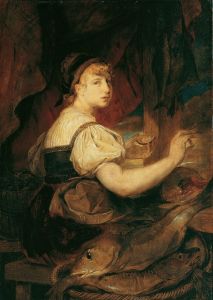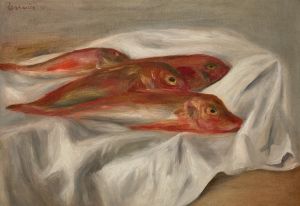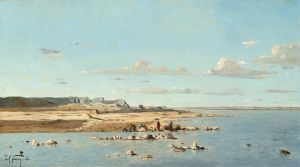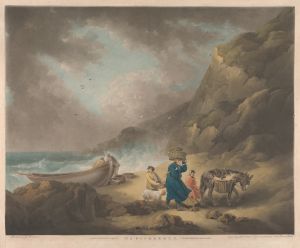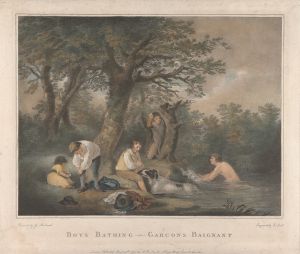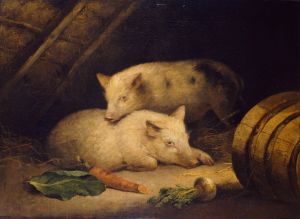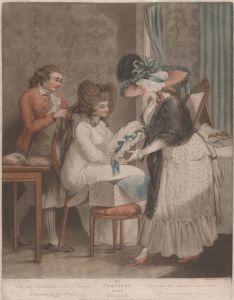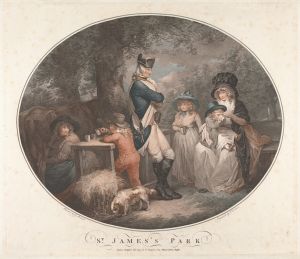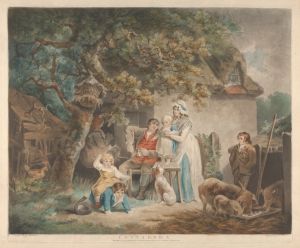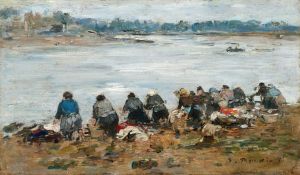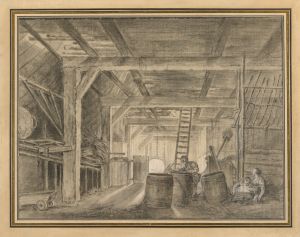
Selling Fish
A hand-painted replica of George Morland’s masterpiece Selling Fish, meticulously crafted by professional artists to capture the true essence of the original. Each piece is created with museum-quality canvas and rare mineral pigments, carefully painted by experienced artists with delicate brushstrokes and rich, layered colors to perfectly recreate the texture of the original artwork. Unlike machine-printed reproductions, this hand-painted version brings the painting to life, infused with the artist’s emotions and skill in every stroke. Whether for personal collection or home decoration, it instantly elevates the artistic atmosphere of any space.
"Selling Fish" is a painting by the British artist George Morland, who was active during the late 18th century. Morland was known for his genre scenes and landscapes, often depicting rural life and the everyday activities of common people. His works are characterized by their detailed and realistic portrayal of scenes, capturing the essence of the period in which he lived.
The painting "Selling Fish" exemplifies Morland's skill in capturing the nuances of daily life. It depicts a coastal scene where fishermen are engaged in the activity of selling their catch. The composition is carefully arranged to highlight the interaction between the fishermen and the buyers, showcasing the economic and social exchanges that were a part of daily life in coastal communities during the 18th century.
In the foreground, a fisherman is seen presenting his catch to a potential buyer, who examines the fish with interest. The expressions and postures of the figures are rendered with great attention to detail, reflecting Morland's keen observation of human behavior. The background features other figures engaged in various activities related to fishing, such as mending nets or preparing boats, adding depth and context to the scene.
The setting of the painting is likely inspired by the coastal areas of England, where fishing was a significant part of the local economy. Morland's use of light and shadow enhances the realism of the scene, creating a sense of immediacy and presence. The naturalistic depiction of the figures and their environment is a hallmark of Morland's style, which was influenced by the Dutch genre painters of the 17th century.
George Morland was born in London in 1763 and showed artistic talent from a young age. He was apprenticed to his father, Henry Robert Morland, who was also an artist. George Morland's career was marked by both success and personal struggles, including financial difficulties and issues with alcohol. Despite these challenges, he produced a significant body of work that was well-regarded during his lifetime and continues to be appreciated today.
"Selling Fish" is an example of Morland's ability to capture the essence of rural and working-class life with empathy and precision. His paintings provide valuable insights into the social history of the period, offering a window into the lives of ordinary people. Morland's work remains an important part of British art history, and "Selling Fish" is a testament to his talent and his contribution to the genre of genre painting.
The painting is held in various collections, and its exact provenance may vary. Morland's works are featured in several museums and galleries, reflecting his enduring popularity and the historical significance of his art. "Selling Fish" continues to be studied and admired for its artistic merit and its portrayal of a bygone era.






